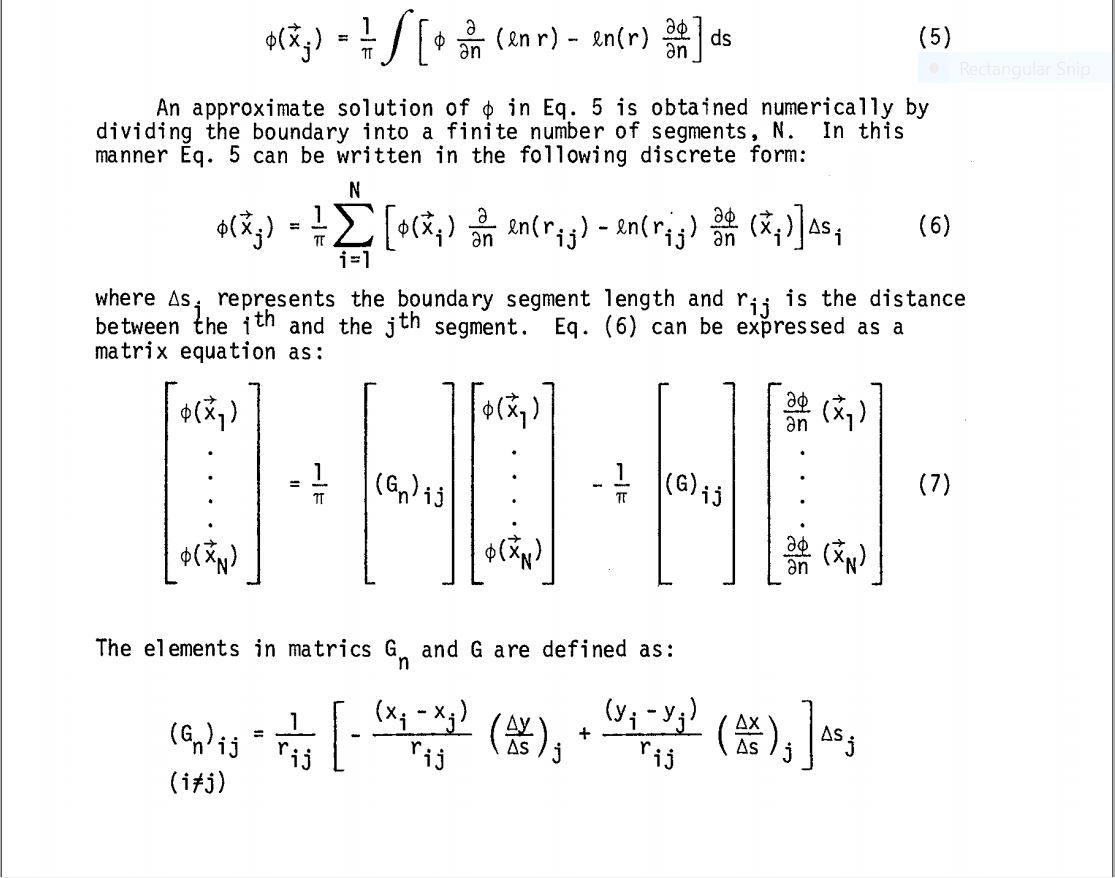If I have the following integral equation $$\phi(\vec{x})=\frac{1}{\pi}\int [\phi\frac{\partial (\ln r)}{\partial n} -\ln(r) \frac{\partial \phi}{\partial n}] ds$$
An approximate solution of $\phi$ is obtained numerically by dividing the boundary into a finite number of segments ,N.
So we can write $$\phi(\vec x_j)=\sum_{i=1}^{N} [\phi(\vec x_i)\frac{\partial \ln(r_{ij})}{\partial n} -\ln(r_{ij})\frac{\partial \phi}{\partial n}(\vec x_i)]\Delta s_i $$ Where $\Delta s_j$ represents the boundary segment length and $r_{ij}$ is the distance between the $i^{th}$ and the $j^{th}$ segment
So It's easy to write $$\frac{\partial \ln(r_{ij})}{\partial n}=\frac{1}{r_{ij}}[-\frac{(x_i -x_j)}{r_{ij}}(\frac{\Delta y}{\Delta x})_j +\frac{(y_i -y_j)}{r_{ij}}(\frac{\Delta x}{\Delta y})_j ]\Delta s_j$$ And $$Z_{ij}=[\ln(r_{ij})]\Delta s_j$$
Prove that $$\lim_{j \to i} \frac{\partial \ln(r_{ij})}{\partial n}=[\frac{(-x_{ss} y_s + x_s y_{ss})_i}{2}]\Delta s_i$$
My try $$\lim_{j \to i} \frac{\partial \ln(r_{ij})}{\partial n}=\lim_{h\to 0}\frac{-(x_i -x_{i+h})(y'_{i+h})+(y_i - y_{i+h})(x'_{i+h})}{(x_i -x_{i+h})^2 +(y_i -y_{i+h})^2}$$
Using $$x_{i+h}=x_i +h x'_i +(h^2/2) x''_i$$ and $$x'_{i+h}=x'_i +hx''_i$$ Hence we get the required result
My question How to prove that $$\lim_{j \to i} Z_{ij} = [\ln(\frac{\Delta s_i}{2})-1]\Delta s_i$$
I have read this in an article

Thanks in advance .

